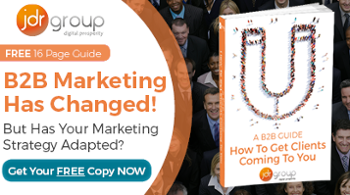How To Qualify Leads And Enquiries & Avoid Wasting Time On The Wrong Prospects

Time, as the old cliché goes, is your most valuable asset. And while it is easy to think that every sales lead or enquiry should be treated like gold dust, the truth is that there are some leads and enquiries which are more deserving of your time than others.
Effectively qualifying leads and enquiries can increase your conversion rates significantly, and also ensure that you do not spend time doing site visits, quotations or tenders for prospects that are unlikely to ever buy from you.
How To Qualify Leads & Enquiries
Firstly, work out the answers to the following question:
What does an ideal lead or enquiry look like?
And also, what does a bad one look like?
What are the demographics of a good enquiry – what industry are they in, what company size, and what location?
What are the psychographic factors – what are their needs, and what is their level of urgency? Also, what makes them a good fit for your business – you may find that your best leads and enquiries are people who have a certain attitude, for example those who are looking for a partner rather than just the cheapest possible price.
Using The BANT Framework
In business to business sales, the BANT framework is very common as a way of qualifying leads:
Budget – are they likely to be able to afford your product/service?
Authority – does the person you are dealing with have the authority to make the decision alone?
Need – how strong is their need or desire for your product/service?
Timescale – are there any factors which could delay the decision or timescale.
This can give you an excellent framework to plan the questions you want your salespeople to ask any new leads or enquiries when they come to you.
‘Informationally Qualified’ Leads
You’ll probably find that the more pages of your website a prospect has read, the more likely they are to buy from you.
So as well as qualifying leads and enquiries on the BANT criteria, another way of considering qualification is in terms of the amount of research they have done – are they ‘informationally qualified’? In other words, have they built trust in your company? Have they attended a webinar or watched an important video to give them a good understanding of the solution you offer?
In other words, what content have they consumed from you? And how much content, over what sort of timeframe? Marketing automation software can help you track this:
How To Qualify Your Online Leads And Enquiries Using Marketing Automation Software
Marketing Automation software (in JDR, we use Hubspot) allows you to do three important things to help you qualify inbound leads and enquiries:
1) Forms
When people complete forms on your website you can choose which questions to ask by the use of form fields. These can include basic contact details (name, email, website address, phone number, address, company name), questions to help you determine if they are within your target market (job role, size of company, location, industry) and also questions to help you understand their needs and potential fit (their biggest challenge, their budget, their area of interest etc).
2) Progressive profiling
If someone in the early stages of their research arrives at your website, they are unlikely to want to fill in a long form and give you lots of information. Instead, offer them some free information, which you can email them in return for their name and email address. Then, when they return to the site and fill out other forms, each time you can ask them for new information so you build up a bigger, better picture of your leads.
3) Lead scoring
This is a way of assigning ‘points’ to leads based on certain factors which you know will affect conversion rates. For example, if someone has watched a certain video or visited a certain page on your website (for example a pricing page) you can give them points. If someone comes back to the website 2-3 times within a week, or if they are in a particular industry or location, or say they have certain level of decision making authority or budget – all of these factors can be given points. This scoring system can help your sales team to prioritise your leads, and it is also possible to use automated workflows (for example sending a sequence of emails) to deal with the low scoring leads rather than waste time.
This technology can help create alignment between the sales team and marketing – if marketing is being used to capture and track the information that the sales team need in order to qualify leads, and to provide more information about the content being consumed by each and every prospect then this makes the sales process far easier.
It also means avoiding wasting precious time on prospects that are unlikely to convert, freeing time up for more productive and profitable activities.
This is all part of our 5-step ‘Get customers coming to you’ system – a step by step way of getting more traffic to your website, increasing the number of inbound leads and enquiries you get and by working on conversions and qualification to increase the number of sales you get. To find out more, go to https://offers.jdrgroup.co.uk/how-to-get-customers-coming-to-you to download your FREE guide.


